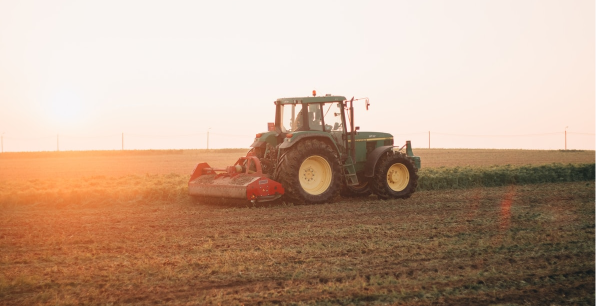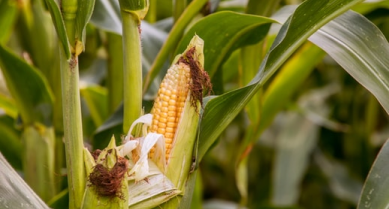Deriving insights from elevation
Generating the contours, ‘sloppiness’ and aspect of a field
Linked data made available through Agrimetrics can be used to generate the contours, ‘slopiness’ and aspect of a field. These have several real-world applications for growers, livestock farms and ecologists.
Andrew Fernando, a software engineer at Agrimetrics with a background in automotive diagnostics, has used two data-sets available on the Agrimetrics infrastructure – Field Boundaries and altitude data – to calculate the contours of a field, which can be exported to and viewed in Google Earth, serving as a visual means of analysing the field’s terrain.
Currently, Andrew has manually generated contours for a small number of fields in the South of England. However, it would be relatively simple for the methodology and data to be programmatically applied to the whole of the UK (and beyond).
“Another dataset derived from elevation data is the aspect of any given area. Here a raster representing the aspect of the terrain can be generated and used to quantify the amount of solar exposure the land could endure. This would help researchers to easily compare similar geographies. They could carry out their research on massive areas – this would improve the accuracy of their research whilst requiring minimal additional resources.”

Andrew Farnando
Software Engineer
There are also more practical implications. Agrimetrics has worked with BASF to create a decision support tool to provide guidance to growers applying pesticides. The goal is to protect waterways by reducing surface run off.
The current model takes account of several relevant variables, including cultivation, soil type and forecasted weather. It applies these variables to a decision tree, which provides users with a recommendation of whether they should spray on any of the succeeding 7 days.
“The current model is a radical improvement on the existing water stewardship guidelines,” says Chris Fitzsimons, a Senior Developer at Agrimetrics who worked on the existing model. “However, the contours, aspect or ‘slopiness’ value could enhance the model further, using this data to simulate possible paths of water flow both above and below ground.”

Step 1: Andrew used the EarthEnv Digital Elevation Model (DEM) – open-source satellite data which provides continuous coverage of ~91% of the globe, organised into ~90m2grids.

Step 2: Andrew then specified a field within the Agrimetrics Field Boundary data, which includes over 2.8 million field boundaries covering the whole of the UK. This field was chosen at random from somewhere in the South of England.

Step 3: The chosen field boundary was buffered by 90m. This ensured that all the relevant DEM grid squares are present once the two data-sets are combined. If boundaries were not buffered to 90m, then the ‘clip’ may result in grid squares which partially fall outside of the field boundary being excluded

Step 4: The DEM altitude data is then ‘clipped’ by the buffered boundary. This was done using QGIS. Andrew chose to add contours at 5m intervals, however, these could have been added at any interval, noting that as the interval decreases, the more complex and denser the contours become. For a large area, computation and time for processing can increase dramatically.

Step 5: The combined and contoured DEM altitude data which has been applied to the buffered boundary is then clipped by the actual field boundary. The result is a field boundary displayed as a polyline with contours.

Step 6: The file is exported as KML and imported into Google Earth to aid visualisation. From here, the contoured field could be displayed within the UI of an application or on the hand held device of a farmer, surveyor or individual working in the biodiversity space.
The availability of linked data is pushing our sector towards a golden age for researchers and agri-tech organisations and bringing us closer to solving some of our biggest challenges

Richard Tiffin
Chief Scientific Officer
Other articles that might interest you

AI identifies crops from space with 90% accuracy
Agrimetrics launches CropLens AI, a proprietary algorithm that identifies crop types from space.

ClearSky: Cloud free satellite data for agriculture
ClearSky's artificial intelligence removes a major barrier to the efficacy of satellite

ClearSky: Cloud free satellite data for agriculture
ClearSky's artificial intelligence removes a major barrier to the efficacy of satellite

Agrimetrics partners with Airbus to reduce cost
Crop Analytics, a crop and field analytics package from Airbus, is now available at a new, lower price.



